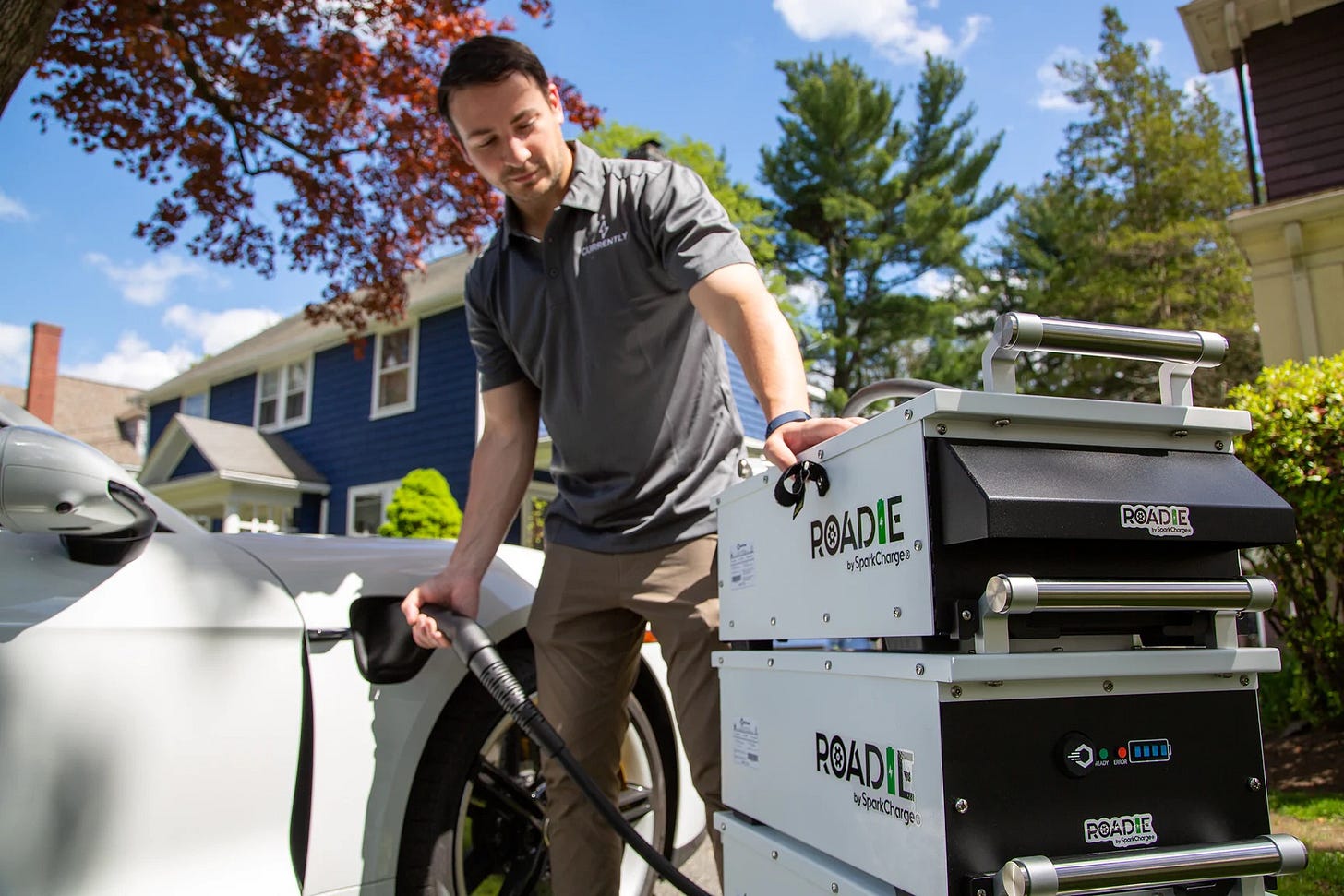I’ve done a few mind experiments and calculations as to what it would take to recharge an EV car or truck on the side of the road if you ran out of charge. I know a few things that won’t work, and at least one that could work. But this will take some investment up front for towing companies.
A portable generator isn’t practical
While it’s possible to recharge an EV car truck or truck with a small portable generator, it’s just not practical. Consider that a Level-1 charger on even a modest EV would only be able to add about 3 to 5 miles range per hour of run time with a 2kW generator. And my tests showed about 45 hours of generator run time to completely recharge the 75kWh battery in my loaner Volkswagen ID.4 last July. So it’s not practical.
A 50kW diesel generator is big and heavy
Yes, it’s possible to add a Level-3 charger on a large diesel generator mounted on the back of the flatbed truck, but that’s a big investment that also requires a lot of maintenance.
Yes, I could make this work. And yes, it could do a booster charge which would add maybe 25 to 35 miles of range to an EV in 10 minutes of charging time. So this is an EV rescue possibility for large municipalities and towing companies that can afford it. But this investment may be impractical for a small town towing service.
SparkCharge Roadie is a possibility
Here’s one way that could work. SparkCharge makes a portable Level 2+ charger that uses portable batteries to provide a fast boost for an EV on the side of the road. What I would love to experiment with is outfitting a Ford F-150 PowerBoost truck equipped with the 3.5L V6 gas engine and onboard 7.2kW generator, with eight of the SparkCharge Roadie batteries and two Level 2+ chargers in the bed of the truck. Here’s my PowerBoost loaner from last year with my 10kW load bank.
You could keep the SparkCharge batteries charged up on the road with the 7.2 kW PowerBoost truck generator, then provide a 25 mile quick charge for up to four stranded EVs on the side of the road in about 15 minutes of charge time per EV. The weight of eight SparkCharge batteries and two of the Roadie Chargers would be around 600 lbs, so this would easily be within the load limit of the F-150 PowerBoost truck. There’s probably room and weight capacity in the F-150 to add an auxiliary gas tank for ICE rescue as well, but that would take some more calculations to know for sure.
Will this work?
I think so… It would require that SparkCharge-equipped rescue vehicles be positioned along interstate highways and ready to respond to any discharged EVs. I’ve already pitched this idea to Ford, but they’re so interested in selling their pure-electric Lightning that it’s hard to get them to answer me. But if the EV manufacturers want us to take their vehicles seriously and buy them, then a dead EV battery rescue plan needs to be put into place sooner, rather than later.
This works on paper (and a slide rule), but to know for sure I would need a loaner truck, loaner SparkCharge batteries and charger, plus find a few EVs to try recharging. But I’m 99% certain this would work.
For info on SparkCharge click HERE
Let me know your thoughts in the comments below…
Let’s play (and charge) safe out there - Mike










OK, that puts a different complexion on things. Multiple service actions in a single call (impossible with a roll-back) would be a huge advantage. I've wondered about this whole scenario for some time (I own a Volvo EV), and the big wild card is, How much "spare gas can range" would a typical road-side rescue need? 20 miles? 50 miles. Interesting puzzle.
An example of no electrical connection to the grid charging using fuel cells.
https://www.foxbusiness.com/industrials/general-motors-hydrogen-generators-electric-car-chargers-military